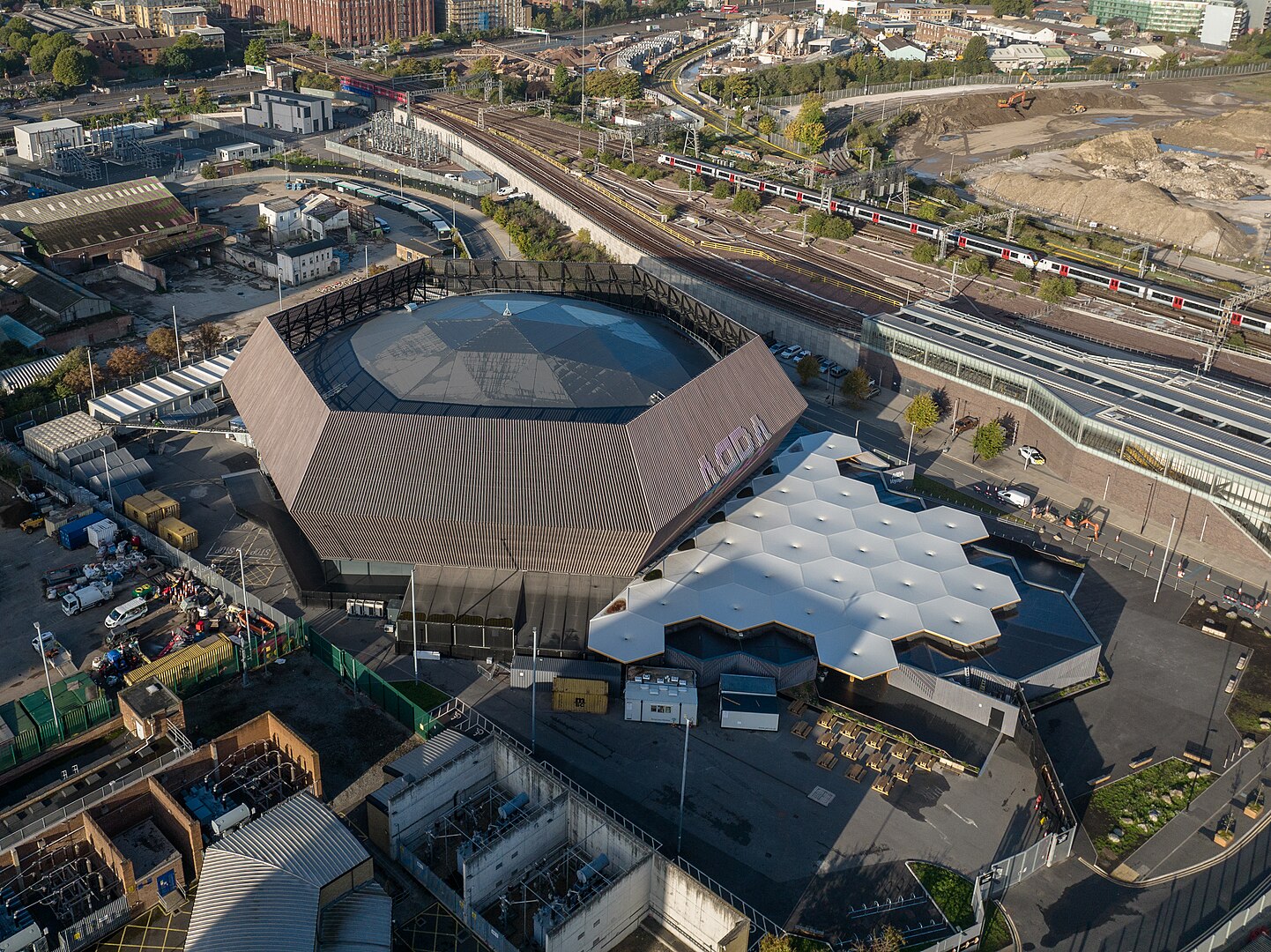Entertainment
How ABBA Voyage and other avatar or ‘hologram’ concert performances evoke fans’ real responses

FILE: ABBA Arena in October 2022. (Photo By Arne Müseler / www.arne-mueseler.com/Wikimedia Commons, CC BY-SA 3.0 de)
At ABBA Voyage, a 90-minute long digital concert event, ABBA’s Benny Andersson looks over the crowd and addresses them reassuringly: “This is really me, I just look very good for my age.”
Andersson, of course, is not physically present in the arena, but rather is a digitally animated avatar.
ABBA Voyage is a new type of concert experience, where avatars of the pop stars are accompanied by live musicians. This performance is hosted in a 3,000-seat custom-built concert venue in London.
Unlike earlier digital avatar performances (sometimes referred to as “hologram” concerts), ABBA Voyage plays out on 65-million-pixel LED screens. In previous shows featuring the likes of Roy Orbison and Whitney Houston, performers’ avatars were projected onto a band of translucent plastic. In both formats, an animated two-dimensional image on a screen gives the appearance of a lifelike, 3D performer.
Recent research on K-pop performances with digital avatars has shown that these digital performers can in fact create a sense of co-presence and immediacy with a live audience, and ABBA Voyage concerts do the same.
Voyage blurs the boundaries of what audiences understand as a live performance, contributing to a century-long conversation about the complex relationship between technology and performance in the arts. It raises questions about whether digital avatar concerts can meet audiences’ expectations in a live concert experience.
Skeptical about aims
Many fans and critics were skeptical about ABBA’s virtual return, which was preceded by a new record release, also titled Voyage.
Reviews of the digital concert experience frequently use language that paint the experience as hyper-real and somewhat uncanny. Reviewer Niall Byrne of the Irish music site Nialler described the show as featuring ABBA “cryogenically frozen as their younger selves.”
But 1.3 million ticket sales later, the show’s success speaks for itself.
However, the fixation on whether or not ABBA Voyage is a “real” concert takes attention away from a far more interesting conversation: how an avatar performance evokes very real responses from an audience sharing a physical space and an emotional experience.
Fans prepare and invest
In 2022, my research assistants and I conducted interviews with audience members ranging in age from their early 20s to their late 50s who had travelled to ABBA Voyage from five different countries in North America and Europe. One of the themes concertgoers were most eager to describe was their preparation for the concert.
Attendees discussed in detail the plans they had drawn up for their trip — sometimes nearly a year in advance. They described the long wait and anticipation they felt, the outfits they had prepared and the way they had re-listened to ABBA’s music — all in an effort to feel ready to participate in an event that they hoped would be meaningful and memorable.
Fears about technology, emotional payoff
Our interview subjects commonly experienced apprehension at the beginning of the show, owing to the amount of preparation they had invested as concertgoers.
For some, it was anxiety about the extensive use of technology and the ways it might hinder the experience. For others, it was simply a nervous hope that the show would live up to their expectations.
One interviewee from Bristol, England, found that they were unable to relax into enjoying the show until they had overcome these anxieties:
“You kind of invest so much into it and you so much want it to be brilliant and you’re kind of a bit worried that you might feel let down. So it wasn’t until the first 10 minutes was over that I found that like: ‘Oh, I can relax now. It is really brilliant so I can enjoy it!’”
Despite fears about technology and the show’s emotional payoff, every interviewee who expressed these reservations later affirmed that their expectations were exceeded by the concert.
Creating lasting memories
Audience members reported that they left the venue with a sense of connection to those with whom they shared the experience — a finding that echoes recent research into fan experiences at other digital concert events.
Some participants noted that they felt unexpectedly emotional participating in this group dynamic, including a middle-aged man:
“It’s kind of like shock and awe isn’t it? …. I felt quite emotional at times through the concert, and you’re thinking: ‘Well, why are you emotional? It’s technology that’s like, reproducing this for you….’ I know there were people around me that were feeling the same way as well, and how often does that happen, you know?”
Voyage works on an emotional level because it encourages audience preparation and anticipation, and then delivers a collective experience of live connection, surprise and wonder.
Human connection
Audiences bring a performance — holographic or otherwise — to life with their attention and investment, and ABBA Voyage serves as a clear demonstration of this effect.
These interviews demonstrated the ways that the audience’s preparation positions them to have a meaningful experience, and how the carefully designed elements of the show ease anxieties about potential disappointment or alienation during the pre-programmed concert.
The audience at Voyage can experience a sense of community and feelings of personal meaning, regardless of whether the performers are bodily present. As music researcher Christopher Small has argued, experiences of identity and meaning in a musical experience are co-created by all of its participants, including the audience.
The new performance practices at ABBA Voyage — and audience members’ responses to them — offer important insights into the inner workings of live audience engagement, particularly as we move further into an age in which human and technological elements are becoming increasingly intertwined.
Research assistants John Glanville and Anna Konrad co-authored this story.![]()
Alyssa Michaud, Assistant Professor of Music, Ambrose University
This article is republished from The Conversation under a Creative Commons license. Read the original article.





















